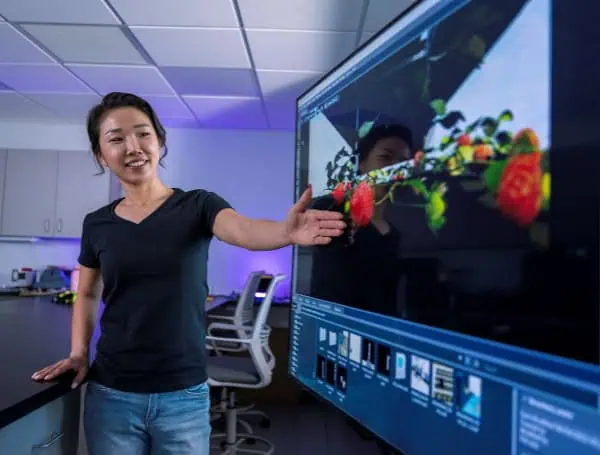
While Florida’s strawberry fields lie dormant for much of the year, a team of University of Florida scientists is cultivating a digital revolution that promises year-round innovation for the state’s $500 million-a-year industry.
By creating a highly accurate “digital twin” of a strawberry field, researchers can now simulate fruit growth and test robotic systems 24/7, a breakthrough that could accelerate the development of cost-saving technology for farmers nationwide.
The pioneering work, led by Dr. Dana Choi, an assistant professor of agricultural and biological engineering at the UF/IFAS Gulf Coast Research and Education Center, has demonstrated that artificial intelligence trained entirely in a virtual environment can perform with remarkable precision in the real world. This virtual replica, a life-sized, digital copy of every row, leaf, and berry, is proving to be a game-changer for agricultural research and development.
READ: Florida Preserves Nearly 2,600 Acres Of Working Farmland In Tri-County Area
“Because the computer-simulated field never goes out of season, new berry-spotting tools can be prototyped even in the summer – speeding innovation,” said Choi.
Traditionally, developing AI for agricultural robots requires a time-consuming and costly process of capturing and manually labeling thousands of images from real fields, an activity restricted to the November through April growing season. Choi’s team bypassed this bottleneck by training their AI-powered robot within the digital twin. The system “drove” through the simulated Hillsborough County farm, learning to identify and analyze the virtual fruit.
The results, detailed in newly published research, are striking. The AI, with no prior real-world training, achieved an impressive 92% accuracy in detecting strawberries in actual fields. Furthermore, the robot estimated the real-world diameter of the fruit with an error margin of just 1.2 millimeters—a level of precision sufficient for commercial grading.
“Normally, we’d have to take thousands of photos in real fields, label each one and wait for the right season,” Choi explained. “That takes a lot of time and money. But with a digital twin, we can create and label these photos instantly.”
This successful simulation has profound implications for the agricultural industry, which is valued at $2 billion annually across the United States. The ability to accurately predict fruit size and volume allows growers to forecast yields and optimize harvest schedules, directly impacting profitability.
The benefits extend beyond the strawberry patch. By ironing out bugs in a virtual setting, companies can significantly lower the development costs of new technologies like robotic pickers and smart sprayers.
“The study shows that a realistic digital twin can jump-start AI tool development for strawberry farms, enabling faster, more cost-effective robotics innovation,” Choi stated. “That ultimately lowers the price of new technology.”
This digital twin platform also holds promise for training human operators and for the rapid prototyping of autonomous farm machinery.
By moving the initial stages of development from the field to the computer, the technology can help transition cutting-edge agricultural concepts into practical, on-the-ground solutions more swiftly and economically. This leap forward in research and development could soon allow farmers to reap the benefits of a perpetual harvest of innovation.
Please make a small donation to the Tampa Free Press to help sustain independent journalism. Your contribution enables us to continue delivering high-quality, local, and national news coverage.
Connect with us: Follow the Tampa Free Press on Facebook and Twitter for breaking news and updates.
Sign up: Subscribe to our free newsletter for a curated selection of top stories delivered straight to your inbox.
